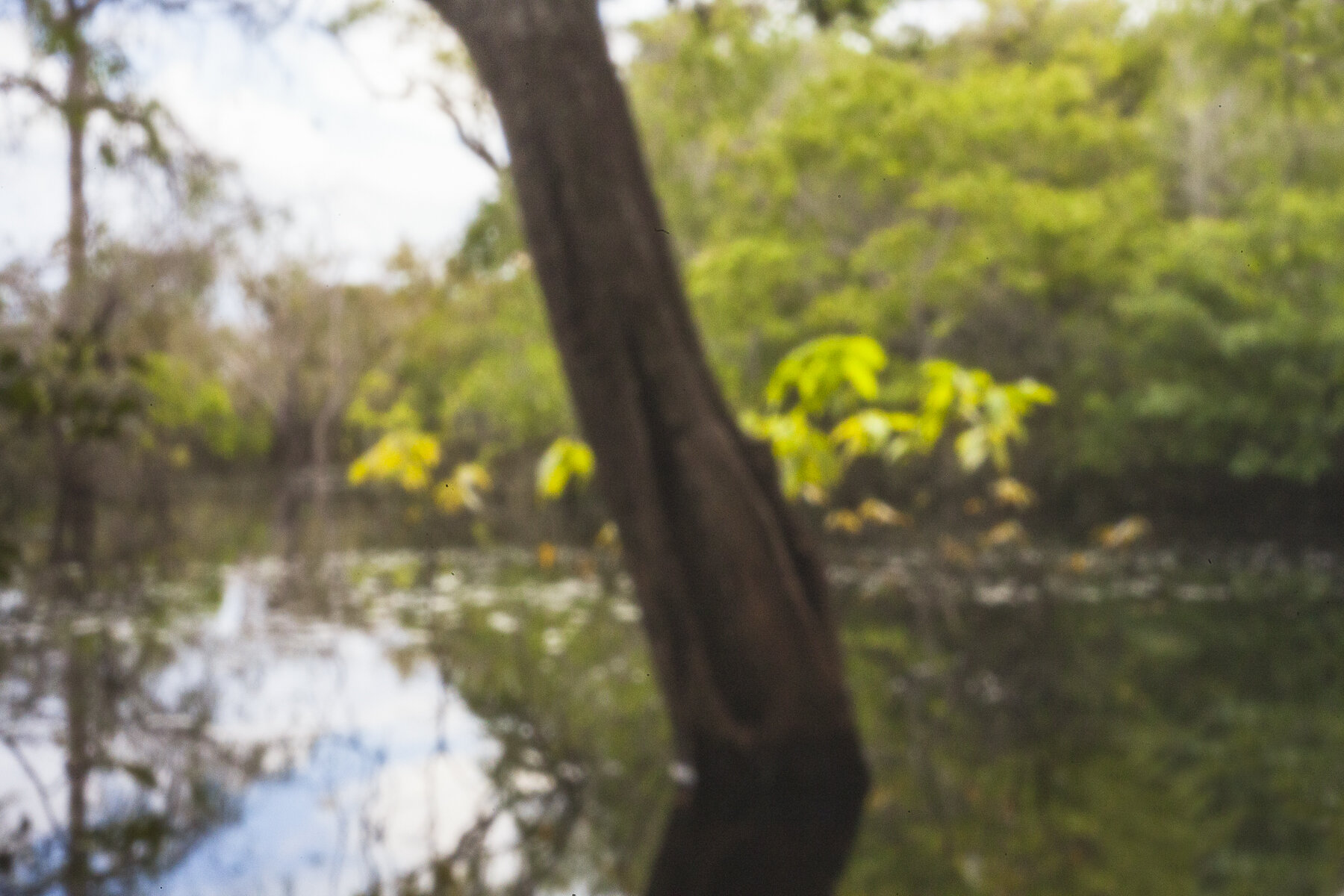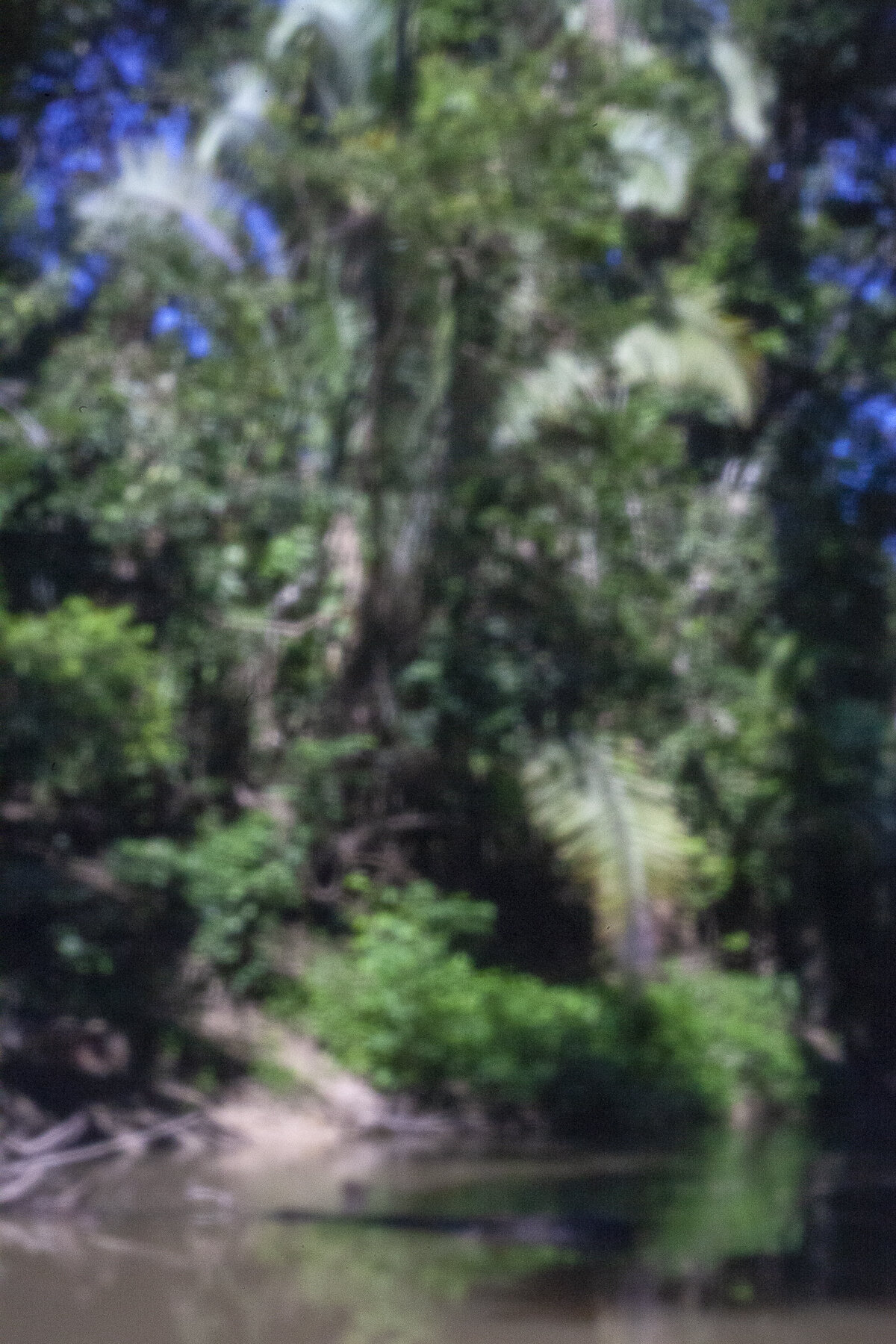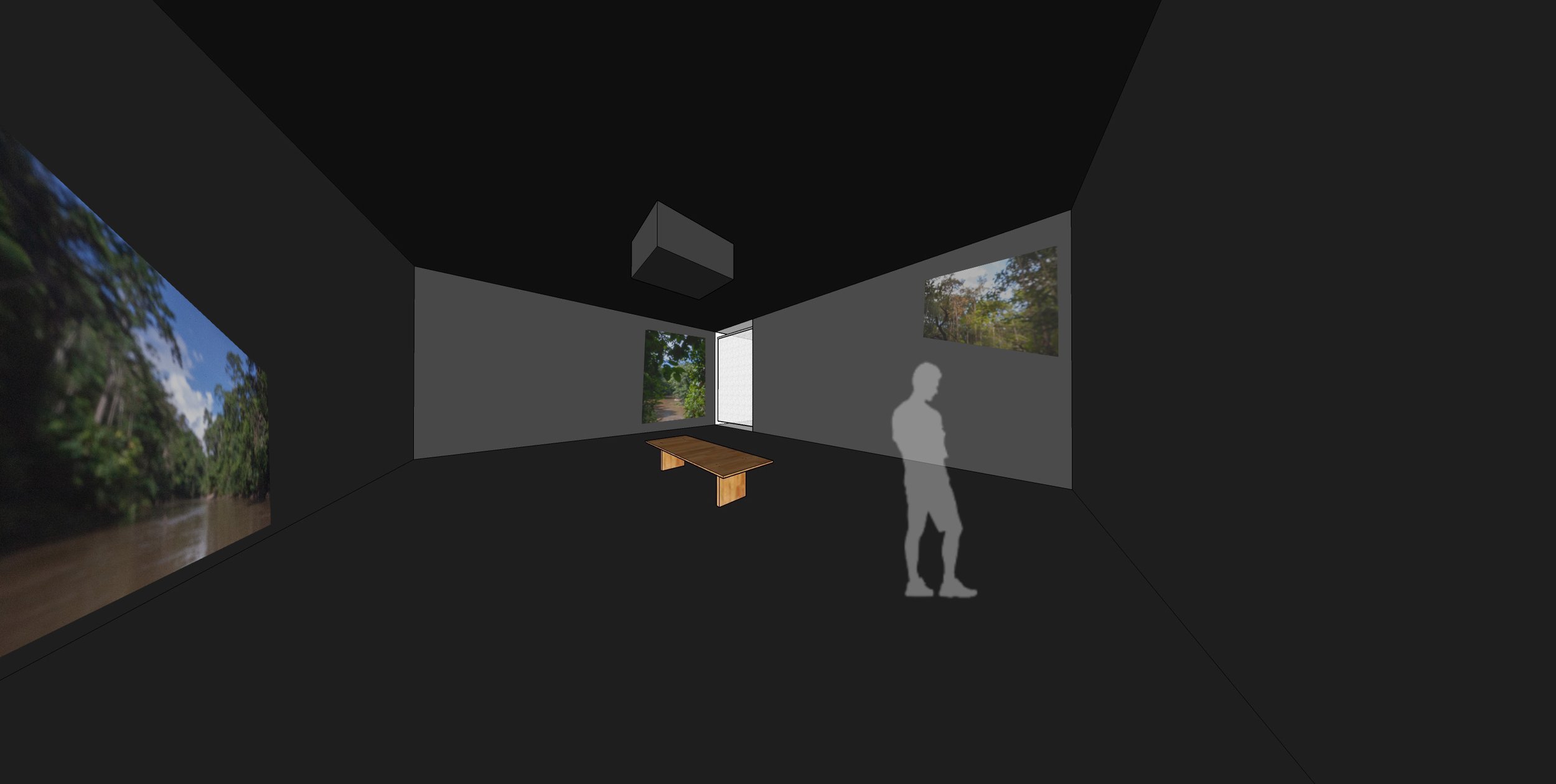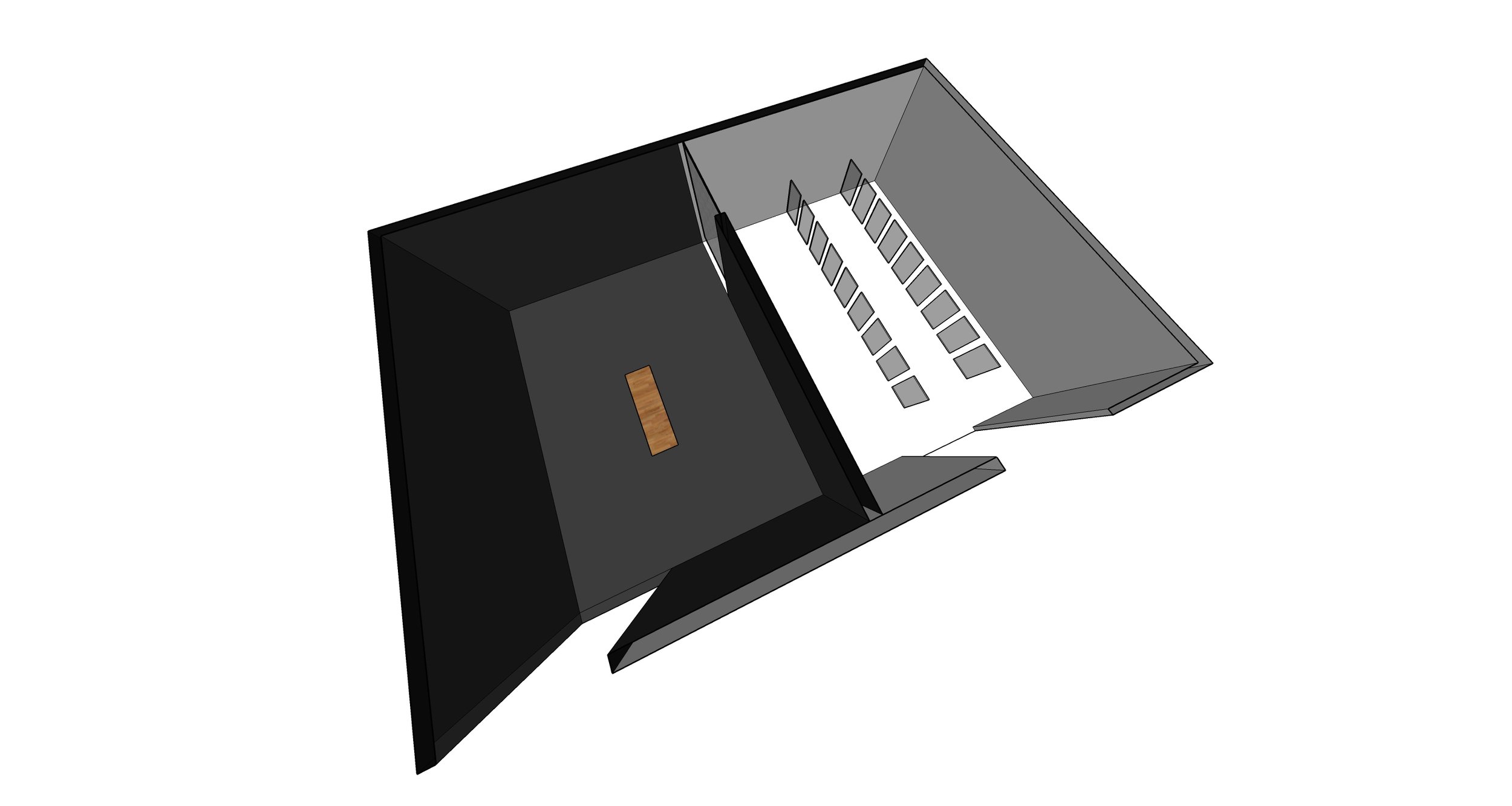Primeira parte: Onira (ver conceito expográfico abaixo)
projeção múltipla de imagens, escalas e tempos variáveis, sala escura.
First part: Onira (see exhibition concept below)
multiple image projection, variable scales and times, viewed in a darkroom

























Segunda parte: Jardim de Inverno (ver conceito expográfico abaixo)
impressões fotográficas, 40x60cm cada, montagem em caixa de acrílico, sala clara.
Second part: Winter Garden (see exhibition concept below)
photographic prints, 40x60cm each, mounted in acrylic box, viewed on a bright room.
Texto elaborado pelo curador independente e crítico de arte Mario Gioia, a partir de conversas de ateliê:
“O projeto Sol que nunca mais se põe é fruto de uma pesquisa iniciada há alguns anos, pelo artista, em sucessivas viagens para a Amazônia. O programa é dividido em duas seções, intituladas Onira e Jardim de Inverno, indissociáveis e complementares, atestando a multiplicidade da investigação conceitual-visual da imagem fotográfica, em especial em alargar e transbordar a imagem encerrada em si mesma, propondo também a experiência única e completa de um projeto expográfico em que suportes, organização do espaço e mídias escolhidas operam papel relevante.
O título do projeto, Sol que nunca mais se põe, é inspirado no verso final da canção Bye Bye Brasil (1979), cuja mais famosa interpretação é de Chico Buarque, autor da letra com Roberto Menescal. Com isso, dá a senha para remissões ao salto desenvolvimentista do Brasil nos anos 1970, quando obras como a Transamazônica e diversas usinas hidroelétricas afetaram e causaram a destruição de porções relevantes da floresta.
A primeira parte, Onira, consiste numa projeção múltipla de imagens ambientada em uma sala escura, para ser veiculada de modo caleidoscópico, com tempos, exposições, escalas e ritmos diversos. Num mergulho sensorial, portanto, os cliques da rica flora amazônica surgem em uma narrativa randômica, em um movimento que revela a pulsante riqueza vegetal do bioma e, ao mesmo tempo, desnorteia e nos leva para um estranho sentido de escape e esvaziamento.
Na segunda parte, Jardim de Inverno, a regularidade formal dá o norte, com a série sendo apresentada em impressões sobre papel vegetal, em escala fixa, montadas em caixas de acrílico e dispostas como objetos numa sala ao estilo cubo branco.
Os registros fotográficos que constituem o projeto são captados por meio da técnica de pinhole, em formato digital. Essa opção busca obter imagens imperfeitas, em um certo estado inacabado de materialização. Na primeira parte do projeto, Onira, busca-se ressaltar uma ideia de transitoriedade da floresta amazônica por meio das representações obtidas com as projeções múltiplas em sala escura, ainda que mais próximas da vigência de um sonho ou ilusão. Já na segunda parte, Jardim de Inverno, a precariedade de nitidez, fruto da técnica empregada, vai em direção ao estouro da luminosidade, de certa forma apagando o vestígio indicial do vigoroso verde da floresta, rumando para a impermanência, talvez para a extinção. A opção pela impressão e montagem, nessa parte final do projeto, objetifica e sugere um certo “fim de história” à temática retratada, levando o espectador a uma transição para a situação de vigília ou despertar, ao final enclausurada em suportes estáticos de acrílico.
O trabalho Sol que nunca mais se põe se inscreve no quadrante de urgência que a temática referente ao meio-ambiente ocupa na contemporaneidade, em especial do processo crescente de destruição e espoliacão do bioma amazônico experimentado nos últimos anos, com severos impactos para o Brasil e o mundo. Assim como a canção entonada por Chico Buarque – “(...)o sol nunca mais vai se pôr” – parece indicar a cristalização de um estado presente da vida do brasileiro médio que aprisiona e teima em não rumar ao futuro tão propagandeado naquele período, o trabalho reforça uma discussão sobre o caráter de repetição ou de ciclo que não se encerra, materializado pelo retorno, nos últimos tempos, das estratégias polêmicas de ocupação da Amazônia típicas dos anos 1970, com as implicações que ameaçam a sua existência”.
Mario Gioia
Text written by independent curator and art critic Mario Gioia, based on studio conversations:
The Sun that Never Sets Again project is the result of research initiated a few years ago by the artist, in successive trips to the Amazon. The program is divided into two sections, entitled Onira and Winter Garden, inseparable and complementary, attesting to the multiplicity of conceptual-visual investigation of the photographic image, in particular in expanding and overflowing the image enclosed in itself, also proposing a unique and of an exhibition project in which supports, space set up and chosen media play a relevant role.
The project's title, The Sun that Never Sets Again, is inspired by the final verse of the song Bye Bye Brasil (1979), whose most famous interpretation is by Chico Buarque, author of the lyrics with Roberto Menescal. With this, it gives the password to references to Brazil's developmental leap in the 1970s, when works such as the Transamazônica road and several hydroelectric plants affected and caused the destruction of relevant portions of the forest.
The first part, Onira, consists of a multiple projection of images set in a dark room, to be conveyed in a kaleidoscopic way, with different times, exposures, scales and rhythms. In a sensorial dive, therefore, the clicks of the rich Amazonian flora appear in a random narrative, in a movement that reveals the pulsating plant richness of the biome and, at the same time, bewilders and takes us to a strange sense of escape and emptying.
In the second part, Winter Garden, formal regularity leads the way, with the series being presented in fixed scale prints on tracing paper, mounted in acrylic boxes and arranged as objects in a white-cube-style room.
The photographic records that make up the project are captured using the pinhole technique, in digital format. This option seeks to obtain imperfect images, in a certain unfinished state of materialization. The first part of the project, Onira, seeks to emphasize an idea of the transience of the Amazon forest through representations obtained with multiple projections in a dark room, even if closer to the effect of a dream or illusion. In the second part, Winter Garden, the precariousness of sharpness, the result of the technique used, goes towards the burst of luminosity, somehow erasing the vestige of the forest's vigorous greenery, heading towards impermanence, perhaps towards extinction. The option for printing and framing, in this final part of the project, objectifies and suggests a certain “end of story” to the theme portrayed, taking the viewer to a transition to the situation of wakefulness or awakening, in the end enclosed in static acrylic supports.
The work The Sun that Never Sets Again is part of the urgency quadrant that the theme referring to the environment occupies in contemporary times, especially the growing process of destruction and dispossession of the Amazon biome experienced in recent years, with severe impacts for Brazil and the world. Just as the song sung by Chico Buarque – “(...) the sun will never set again” – seems to indicate the crystallization of a present state of life for the average Brazilian who imprisons and insists on not heading to the future so advertised in that period, the work reinforces a discussion on the character of repetition or cycle that does not end, materialized by the return, in recent times, of the controversial Amazon occupation strategies typical of the 1970s, with implications that threaten their existence.
Mario Gioia
Simulação 3D do conceito expográfico para as duas salas propostas:
3D simulation of the exhibition concept for the two proposed rooms:
Simulação em 3D da Primeira Parte: Onira
3D Simulation of Part One: Onira









Visão em 3D da Segunda Parte: Jardim de Inverno
3D View of Part Two: Winter Garden















